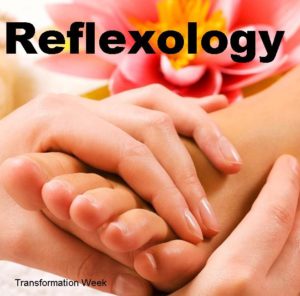What is Reflexology?
 It is a method of stimulating the feet in order to achieve perfect healing in the body system. In order to achieve this healing, Reflexology is always done by putting pressure on certain parts around the feet region.
It is a method of stimulating the feet in order to achieve perfect healing in the body system. In order to achieve this healing, Reflexology is always done by putting pressure on certain parts around the feet region.
This method of healing has been around for a very long time and according to early researchers, it has been used for over 5000 years. There are documents that originate from Asia which talks about acupressure techniques extensively.
For centuries, people who hail from Native America have also known about the correlation that exists between a human’s feet and the body as a whole as they would use mud and herbs to rub into the depth of the feet which is a way of proving that there is a connection between the feet and other parts of the body. This form of treatment is used for illness, pain and diseases as they believed that this form of treatment would improve one’s well-being.
Modern reflexology which began in the early 1900’s was engineered by Dr’s. William H. Fitzgerald, Edwin F. Bowers and George Starr White. These Doctors developed the “Zone Therapy” and this was because they believed that the body was “mapped” with different zones and that these zones corresponded with vital areas of the body.
“Dr. Eunice Ingham who is often referred to as the Mother of Modern reflexology further developed what William, Edwin and George had started. She built on earlier discoveries made by these men by amplifying the zone therapy. She was able to do this by mapping the feet. In addition to this, Dr Ingham discovered many strategic areas in the feet and in the hands which correlated with various organs, structures and glands in the human body. The gland is stimulated when these points are been stimulated with applied pressure.
HOW DOES REFLEXOLOGY WORK?
Reflexology session begins with a gentle “warming up”’ of the feet and after the completion of this exercise, the reflexology instructor will then start to apply pressure to strategic areas on the feet. By doing this, the ending of the pressure point is stimulated. In turn, the corresponding organ or gland will be stimulated, sometimes a “crystal deposit” is found on a specific areas.
These crystals are believed to block the nerve ends. Then, your instructor will then break the deposits by applying pressure on the affected area. By doing this, the link that exists between the correlating organ and nerve ends will be opened.
How the body responds to reflexology is not the same in everyone. Some may experience quick results while some others will need numerous sessions before they can start to experience the type of results they actually want. Like any other means of treating a disease, getting results from reflexology is strongly based on how long the condition has existed in the body of the individual and how severe the condition is.
By making a decision to take a Reflexology course, some of the reliefs’ people tend to have are:
- relief from stress
- better sleeping periods
- relief from back pain
- relief from migraine headaches and many more.
Like benefits which are gained from massage therapy, reflexology improves the way the kidney of an individual functions. It also improves the way the intestines, skin, circulation and lungs functions. In addition to this Reflexology increases the way an individual is able to control his or her bladder and metabolic system. Also, by releasing Endorphins into the body, Reflexology helps in relieving pain and by stimulating the nerve ending. Another great benefit of Reflexology is that it helps in reducing stress and fatigue.